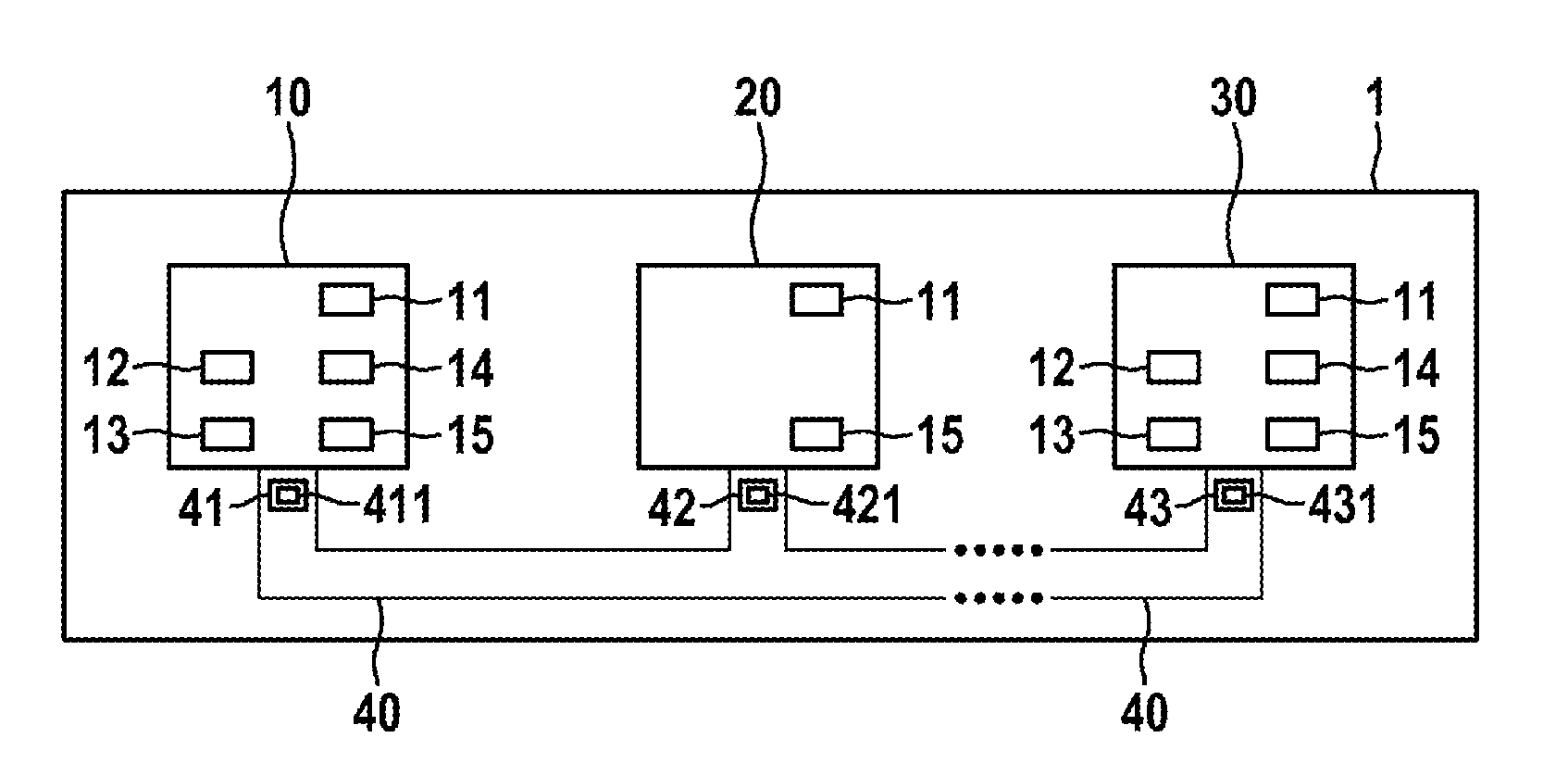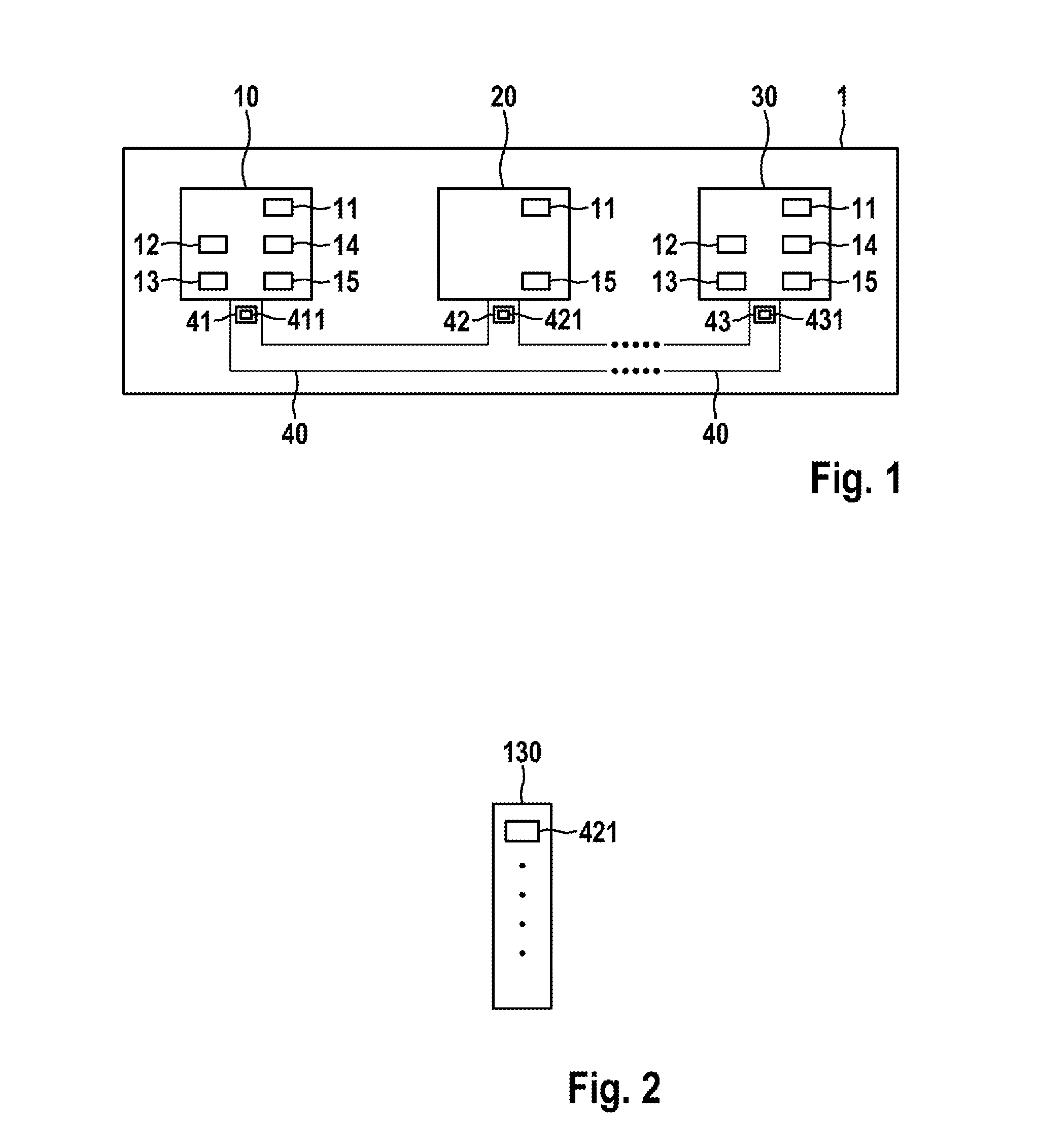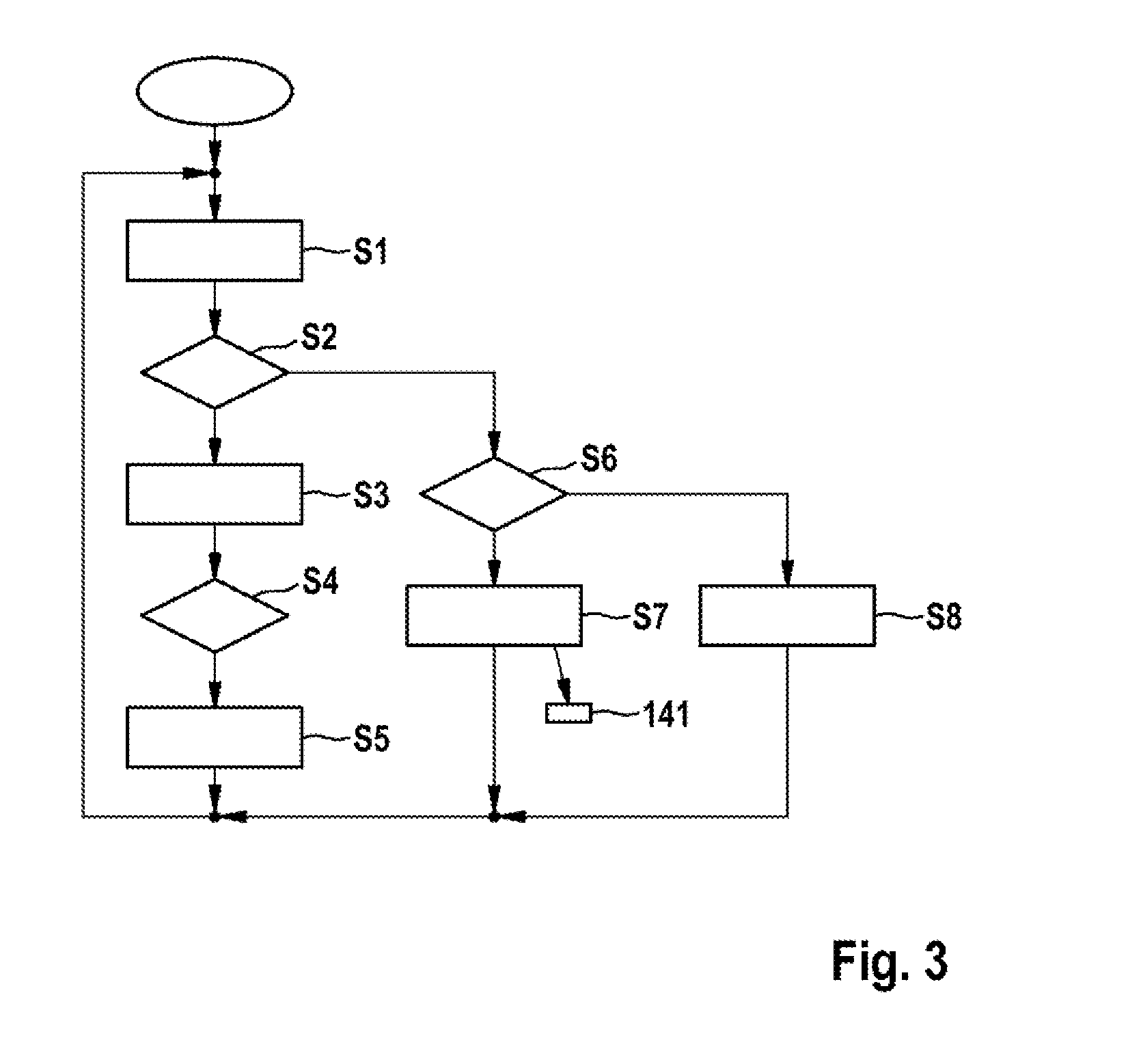Subscriber Station for a Bus System, and Method for Increasing the Data Rate of a Bus System
a bus system and subscriber station technology, applied in the field of subscriber stations for bus systems, can solve the problems of affecting the reception of receivers, affecting the signal quality, and generating reflections in the transmission of data at each branch of the data line, so as to achieve the effect of increasing the data rate of the bus system
- Summary
- Abstract
- Description
- Claims
- Application Information
AI Technical Summary
Benefits of technology
Problems solved by technology
Method used
Image
Examples
Embodiment Construction
[0039]FIG. 1 shows a bus system 1 which may be, for example, a CAN bus system, a CAN-FD bus system, etc. The bus system 1 may be used in a vehicle, in particular a motor vehicle, an aircraft, etc., or in a hospital, etc.
[0040]In FIG. 1, the bus system 1 has a multiplicity of subscriber stations 10, 20, 30 which are each connected to a bus line 40. Messages 41, 42, 43 in the form of signals can be transmitted between the individual subscriber stations 10, 20, 30 via the bus line 40. The messages 41, 42, 43 each have one message identifier of message identifiers 411, 421, 431, which is also referred to as the CAN ID in CAN bus systems. The subscriber stations 10, 20, 30 may be, for example, control devices or display apparatuses or sensors of a motor vehicle.
[0041]As shown in FIG. 1, the subscriber station 10 has a communication control device 11, a checking device 12, a memory device 13, an error handling device 14 and a transmitting / receiving device 15. In contrast, the subscriber s...
PUM
 Login to View More
Login to View More Abstract
Description
Claims
Application Information
 Login to View More
Login to View More - R&D
- Intellectual Property
- Life Sciences
- Materials
- Tech Scout
- Unparalleled Data Quality
- Higher Quality Content
- 60% Fewer Hallucinations
Browse by: Latest US Patents, China's latest patents, Technical Efficacy Thesaurus, Application Domain, Technology Topic, Popular Technical Reports.
© 2025 PatSnap. All rights reserved.Legal|Privacy policy|Modern Slavery Act Transparency Statement|Sitemap|About US| Contact US: help@patsnap.com



